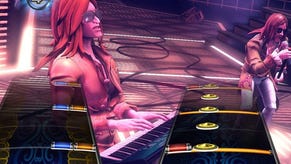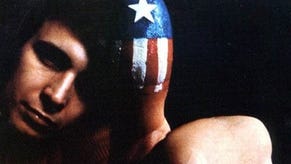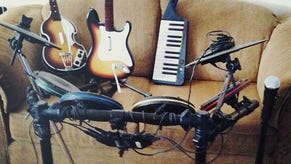Rock Band 3
Finished symphony.
I'm just back from the cinema where I watched Somewhere, Sofia Coppola's latest it's-a-bit-like-Lost-In-Translation-again-isn't-it take on the spiritually and often literally empty existence of a Hollywood star.
In the middle of the movie, a pivotal scene of bonding between the protagonist, Johnny Marco, and his 11-year-old daughter, whom he has long-neglected through his louche, bed-hopping ways, plays out over a session of Guitar Hero (briefly glimpsed in the trailer).
The daughter and her father's best (only) friend are then seen carefully customising a guitar controller with paint while Marco clumsily fails in his attempt to play 20th Century Boy on Hard difficulty. Lightweight.
Aside from the neatness of seeing Guitar Hero on the big screen before coming home to write about the latest work from its original creator, it served as a vivid reminder of just how deeply embedded this silly pretend instrument and the genre it spawned have become in popular culture.
Yet despite billions of dollars spent on music games and 40 million guitar controllers sold in just five years, sales have collapsed. The perfectly decent Guitar Hero: Warriors of Rock did not, to say the least, reverse this trend at launch, while the superb DJ Hero 2 fared even worse.
This is the tough crowd Rock Band 3 must face when it arrives this Friday - not simply as a game, but alongside new instruments costing up to £120 a pop. Can it win them over?
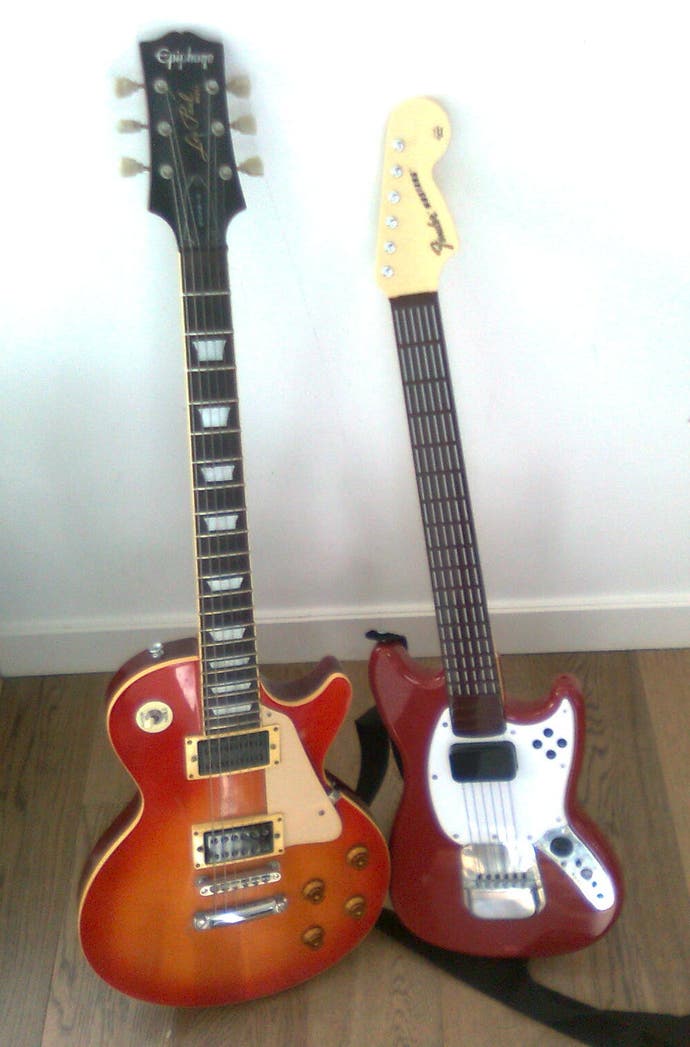
That's really up to you. But I can at least say with confidence that Rock Band 3 is the greatest music game ever made. Here's why.
Let's start with the thing most people are banging on about: the keyboard (£110 with the game, £70 separately). Which, technically, is a keytar - and Harmonix's decision to go with the hybrid design is its first master-stroke.
You see, Guitar Hero was – and always will be – a performance both on-screen and off. Boinging around with the guitar or falling to your knees during an absurd solo is never less than fun – whether you're doing the watching or the writhing.
A standard keyboard, perched on lap or stand, would have still worked fine, but the keytar, with its neck-handle and strap, becomes gaming's next must-have shame-maker.
The single most euphoric, almost-literally-balls-out amazing experience I've had with the game was jumping around in my underpants with the keyboard, jabbing away at the chords of The Power Of Love. It doesn't get much better than that, readers.
Before I get on to the Pro features, you may have read elsewhere that, while the keytar supports traditional Rock Band gameplay using five adjacent keys, this is 'a bit rubbish' and not worth bothering with. Nonsense. On the contrary, it performs the same classic trick as the guitar.
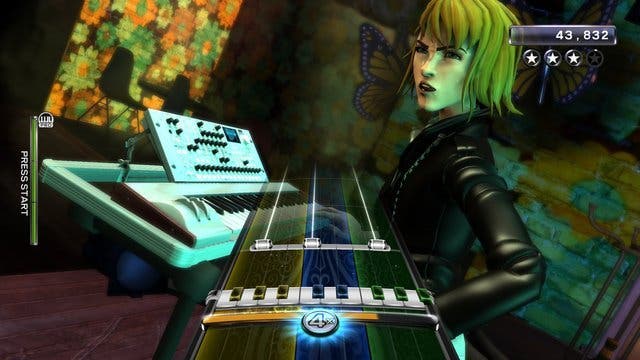
The original genius of Guitar Hero was in making the player lose himself in the fantasy of being an axe-god, effortlessly performing insane solos without actually needing to learn how to do it properly.
The same is true of the keys. Five-key button-matching is an engaging and distinct rhythm-action experience in its own right – different enough that, even if you nailed the guitar long ago, your brain will need some rewiring to cope with the harder tracks.
Add that to the fact you're prodding away on a proper keyboard and the illusion is complete. And since your hand stays in one position for basic keys, sight-reading is eminently possible, so it's ideal party fodder.
A lesser developer might have settled for this as the key innovation. For Harmonix it's almost incidental. The peripheral is not, of course, just five keys – switch to Pro Mode and you have a two-octave range at your finger-tips.



